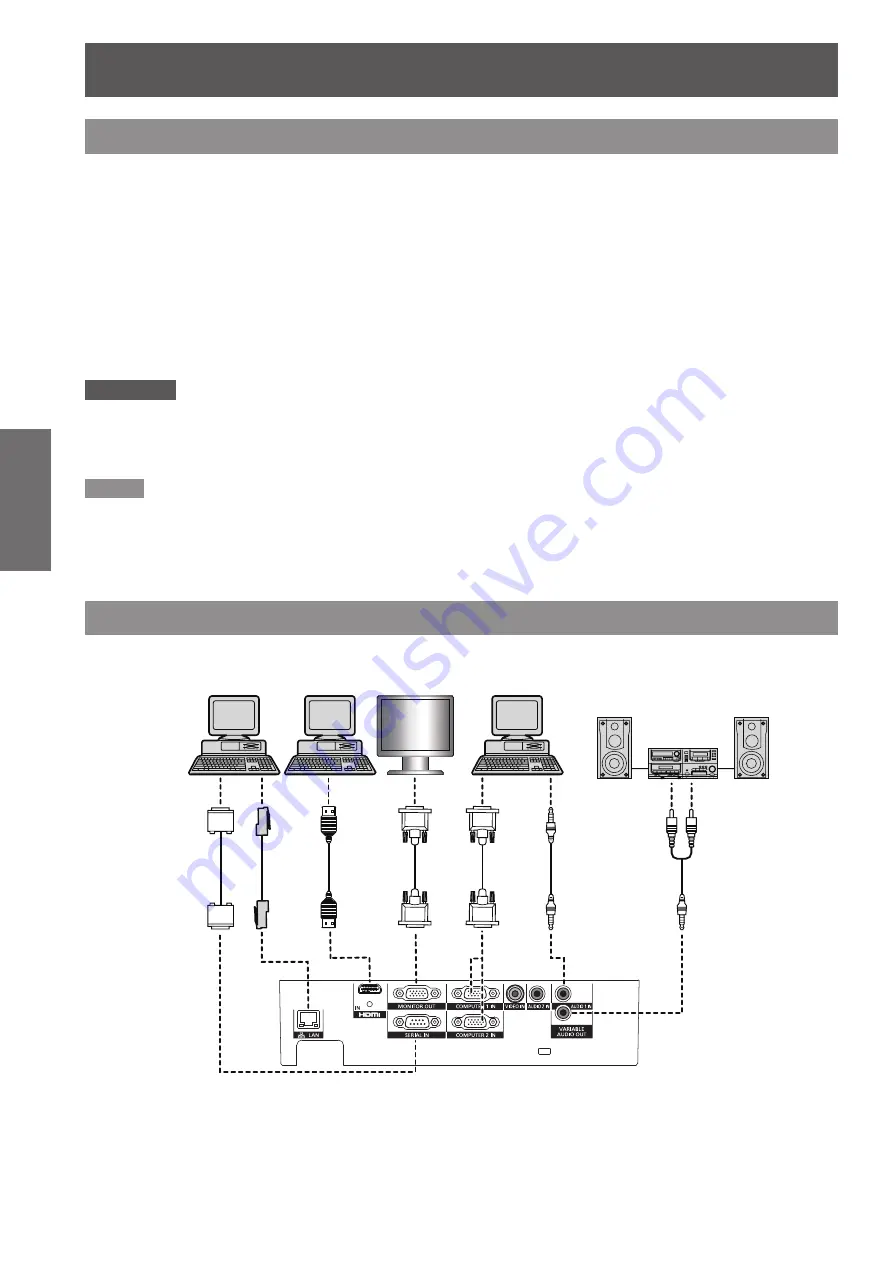
Connections
26
- ENGLISH
Getting Started
Before connecting to the projector
Read carefully the instruction manual for the device to be connected.
z
Turn off the power switch of the devices before connecting cables.
z
If any connection cable is not supplied with the device, or if no optional cable is available for connection of the
z
device, prepare a necessary system connection cable to suit the device.
Video signals containing too much jitter may cause the images on the screen to randomly wobble or wafture.
z
In this case, a time base corrector (TBC) must be connected.
The projector accepts the following signals: VIDEO, analogue-RGB (with TTL sync. Level) and digital signal.
z
Some computer models are not compatible with the projector.
z
When using long cables to connect with each of equipment to the projector, there is a possibility that the image
z
will not be output correctly unless a compensator is used.
For details on what video signals the projector supports, see “List of compatible signals”. (
z
Æ
pages 67-68)
Attention
When connecting with a video deck, be sure to use the one with a built-in time base corrector (TBC) or use a TBC between
z
the projector and the video deck.
If nonstandard burst signals are connected, the image may be distorted. If this is the case, connect a TBC between the
z
projector and the video deck.
Note
Use an HDMI cable that conforms to HDMI standards such as an HDMI High Speed cable. If a cable that does not meet
z
HDMI standards is used, video may be interrupted or may not be displayed.
When connecting the 1080p signal using HDMI, use a cable compliant with 1080p signal.
This projector does not support the VIERA Link (HDMI).
z
Connecting example: Computers
Audio equipment
Control
Computer
Monitor
Computer
Computer
Connections
















































